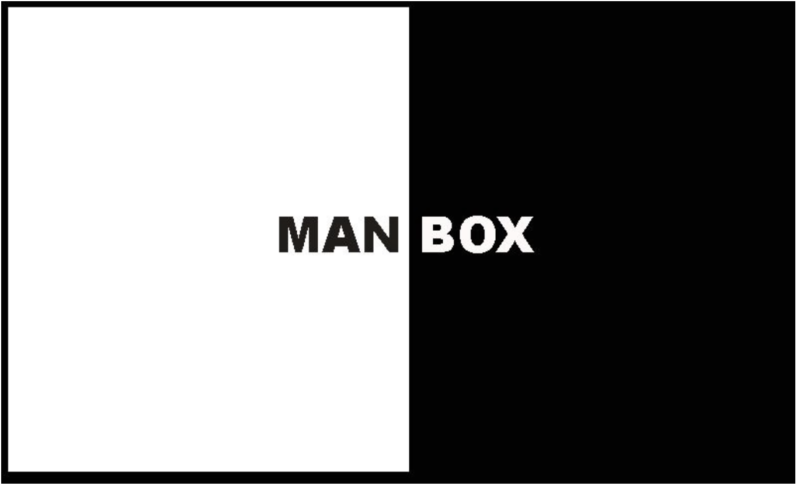
If you listen to conservatives tell it, you would think that the political right believes in smaller government, less regulation, and maximum personal liberty, while liberals and the left support big government, and substantial interventions by the state, even at the expense of individual freedom.
That’s because if you listen to conservatives, you’re listening to liars.
The myth of small-government conservatism is the zombie lie that refuses to die. But hopefully, with recent developments — including the Supreme Court’s decision overturning Roe v. Wade, and thus, the right to abortion — the veil will finally be lifted from the public’s eyes.
If so, perhaps we can put to rest all the silly talk of how conservatives are hypocritical when they claim to support limited government.
Because nothing could be further from the truth.
Oh, sure, their positions on several issues may seem hypocritical and inconsistent.
After all, they support restricting women’s reproductive freedom and the rights of LGBTQ folks, as well as banning school curricula they find objectionable while demanding less regulation on businesses, lower taxes, and virtually no limits on the right to own and carry a firearm.
But there is no hypocrisy or even remote inconsistency in these things, at least not if you understand the real motivations and ideological commitments of those who inhabit the political right.
Because the difference between right and left has nothing to do with their respective support for, or opposition to, the government’s size, regulatory authority, or willingness to intervene in the affairs of the populace.
Both sides support big government, regulation, and state intervention. The only real difference is — on behalf of whom?
. . .
The right, broadly speaking, supports government action so long as it upholds traditional lines of authority, which it views as legitimate. The left generally challenges traditional authority, which it often sees as corrupt, unjust, or oppressive.
This has been the broad meaning of the terms ever since the French Revolution when those who supported the monarchy sat on the right side of the National Assembly while those who opposed it and supported overthrowing royalism sat to the left.
In the U.S., though political parties have often morphed and changed their ideological loyalties, the ideologies themselves — conservatism on the one hand and liberalism or progressivism on the other — have remained static.
In the antebellum era, conservatism and reactionary politics were represented by Democrats who sought to conserve and preserve the traditional authority of enslavers — the landed gentry in the South. And it was the Republicans whose relative liberalism pushed against those traditions.
It was also Abraham Lincoln who took what we would now consider a progressive or left stance on economics when he noted:
Although both parties in the first half of the twentieth century were racist vis-a-vis Blacks and Asian immigrants, conservatism and the political right began to find purchase most solidly in the Republican Party, especially around economics.
To the right, represented in economic matters by the GOP, the traditional hierarchy of rich over poor was part of the natural order. The wealthy had earned their position, and the poor theirs. To the liberal/left, represented for more than a decade by President Franklin Roosevelt, that order resulted from corruption, the predatory policies of rapacious capitalists, and the blatant mistreatment of workers.
By the time of the Civil Rights era, the right was comprised mainly of Southern Democrats and Western and Sun Belt Republicans, often for different reasons, but always in defense of traditional hierarchy, whether understood as white men, the rich, or the broader business class.
Now, when the right pushes tax cuts, abortion bans, restrictions on LGBTQ folks, more cops and prisons, open carry for firearms, or book banning, it may seem inconsistent — more government intervention here, less over there — but it isn’t.
It makes sense if you understand their actual project: maintaining or restoring traditional hierarchy to society: white, gun-toting, straight Christian men, and the rich, as unfettered, hegemonic rulers.
Tax cuts and deregulation bolster the position of traditional economic elites.
Abortion restrictions restore the traditional power of men over women (and the church over the public).
Limiting LGBTQ rights, from marriage equality to employment opportunity, restores the traditional authority and hierarchy of straight and cisgender persons, especially fundamentalist Christian moral authority.
Cops and prisons help maintain the authority of the haves over the have-nots since policing itself was created to protect the former from the latter — a dynamic with both racial and class implications.
Open carry restores the traditional authority of white men over everyone else, as white men own a disproportionate share of firearms. As both Carol Anderson and Roxanne Dunbar-Ortiz have documented, it was this group for whom the Second Amendment was intended, to empower white men to form militias to keep both Black folks and Indigenous peoples in line.
And finally, restricting or banning books in classrooms that address systemic racism is a way to restore the authority of the traditional American narrative — the one that insists the United States is a nation of liberty and justice for all, conceived as such from the start.
The right backs that narrative because it wishes to instill the kind of uncritical patriotism that long carried the day before marginalized groups and persons had the opportunity to correct the record.
. . .
So ultimately, the question for everyone to answer is simple.
It’s not, “Do you think the government should be bigger or smaller?”
It’s not, “Do you think the government ought to intervene in the economy or the personal decisions of individual citizens?”
It is this: To what purpose and for whose benefit should such interventions be made?
Because they’re going to be made, either way.
It’s only a matter of who wins and who loses.
If you’re a rich, white, straight, gun-toting, Christian male, it makes sense that you would find yourself aligned with the political right. So too, if you think, regardless of your own identities, that such persons are somehow more intelligent, more moral, and more gifted as leaders.
But if — based on things like history and evidence — you realize that actually, those guys aren’t so great after all, you have no excuse for being a conservative.
None.
You aren’t getting “less government,” just a government that supports various haves against various have-nots.
And if you’re one of those have-nots or have-lessers, it’s time to relinquish the Stockholm Syndrome under which you’re currently operating and realize the right doesn’t love you.
It isn’t taking you to the prom, so to speak.
It won’t commit to you.
Because if you’re working class, a person of color, a woman, or anything other than straight, cis, and a fundamentalist Christian, it was never intended for your benefit.
It exists for your marginalization.
Which is to say, the right has always sought to maintain power in the hands of the few, against the interests of the many.
This is why they have no problem with minority rule — why they think nothing of stacking the courts despite losing the popular vote in seven of the last eight presidential elections.
This is why they have no problem with an electoral college that gives disproportionate power to smaller states and a Senate system that provides states like Wyoming the same power as California.
Because they hate democracy.
If you do, too, by all means, you should be committed to conservatism.
But for the rest of us, we should be committed to only one thing — your political destruction.
—
This post was previously published on An Injustice!.
***
You may also like these posts on The Good Men Project:
 White Fragility: Talking to White People About Racism White Fragility: Talking to White People About Racism |
 Escape the “Act Like a Man” Box Escape the “Act Like a Man” Box |
 The Lack of Gentle Platonic Touch in Men’s Lives is a Killer The Lack of Gentle Platonic Touch in Men’s Lives is a Killer |
 What We Talk About When We Talk About Men What We Talk About When We Talk About Men |
Join The Good Men Project as a Premium Member today.
All Premium Members get to view The Good Men Project with NO ADS.
A $50 annual membership gives you an all access pass. You can be a part of every call, group, class and community.
A $25 annual membership gives you access to one class, one Social Interest group and our online communities.
A $12 annual membership gives you access to our Friday calls with the publisher, our online community.